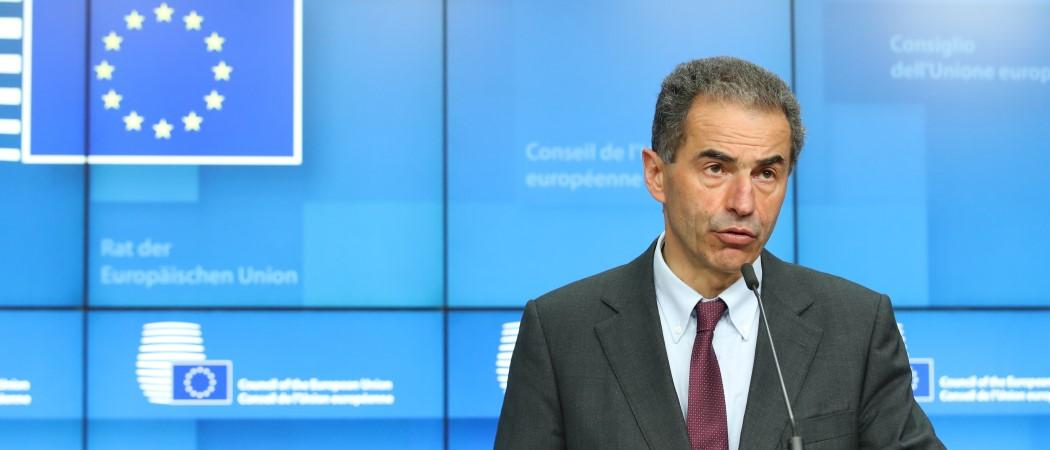The next seven-year phase will see a more inclusive approach by the Knowledge and Innovation Communities - with a sharper focus on eastern Europe

Portuguese Science Minister, Manuel Heitor. Photo: European Council
Starting today, the European Institute of Innovation and Technology (EIT) and its eight innovator networks are operating under a revamped, more inclusive structure and with a renewed brief to improve the innovation potential of Europe’s regions.
“We believe that the changes which have been made in the regulatory framework of the EIT will help [it] open up towards an always-inclusive research excellence strategy in Europe,” said Portuguese science minister Manuel Heitor at the launch ceremony.
EIT has a budget of €2.96 billion for the next seven years, to be distributed to its eight (soon to be ten) innovator networks, the Knowledge and Innovation Communities (KICs). These provide training, business acceleration services and funding to innovators in the different sectors of digital, raw materials, manufacturing, health, climate, innovative energy, food and urban mobility.
The new framework ushers in big changes in the management of KICs. This year, they will have access to 10% of the EIT‘s €2.96 billion budget. If they perform well and attract third-party financing, KICs will get more funding from the EU budget. If not, their funding will decrease.
The tougher financing rules come with more flexibility over how KICs use the money. Annual grants will be replaced by multi-annual agreements, enabling long-term planning. This is something the Parliament fought for, hoping it will allow EIT to respond rapidly to future crises.
EIT, brainchild of former EU Commission president José Manuel Barroso, had a difficult start. His vision of creating a European-scale equivalent of the Massachusetts Institute of Technology did not come off, but despite setbacks Barroso persevered, with EIT getting off the ground in 2008.
“The EIT, with a difficult beginning, is now a very successful instrument,” said MEP Maria da Graça Carvalho, Parliament rapporteur for the EIT, and Barroso’s adviser at the time. “There is no doubt that the EIT will grow in importance in [supporting] the objectives of the digital and green transitions.”
Between now and 2027, EIT aims to support 700 more start-ups, train 20,000 students, involve 700 universities and help commercialise 4,000 new products and services.
The new-look EIT has been in the works for the last three years, with the European Commission and EU policymakers keen to see the KICs being more effective in their mission of boosting innovation across EU countries and regions.
For the EU research commissioner Mariya Gabriel, the new framework is central to delivering on the ambition making Europe into a powerhouse of start-ups.
The key to success, Gabriel believes, will be building a pan-European innovation ecosystem made up of smaller networks spread across the regions. The EIT will be pivotal in doing this, “because the ecosystem approach is in the EIT DNA since its creation in 2008,” she said.
Geographical expansion
Currently the operations of the KICs are largely concentrated in just five countries and the first order of business under the new dispensation is expanding to pull in entrepreneurs in less innovative regions.
The EIT has been running a regional innovation scheme aimed at widening the geographical reach of its activities since 2014. Under the new framework, the scheme will have a set budget, with each KIC spending from 10% to 15% to expand their presence around Europe.
Two new KICs will help here. In autumn, EIT will launch a call to set up a KIC in the cultural and creative industries, with the winning consortia of universities, businesses and research organisations getting funding from September 2022.
The tenth KIC, to be set up in 2026, will foster innovation related to seas and water.
EIT will also work with more universities to translate research into innovation, and to help female entrepreneurs overcome structural inequalities.
With all this, the EU hopes to grow the next generation of talent, which will deliver Europe’s green and digital transitions. “I count on the EIT to equip these change makers – students, researchers, innovators – with the skills and mind set to unlock their potential,“ said Gabriel.





 A unique international forum for public research organisations and companies to connect their external engagement with strategic interests around their R&D system.
A unique international forum for public research organisations and companies to connect their external engagement with strategic interests around their R&D system.